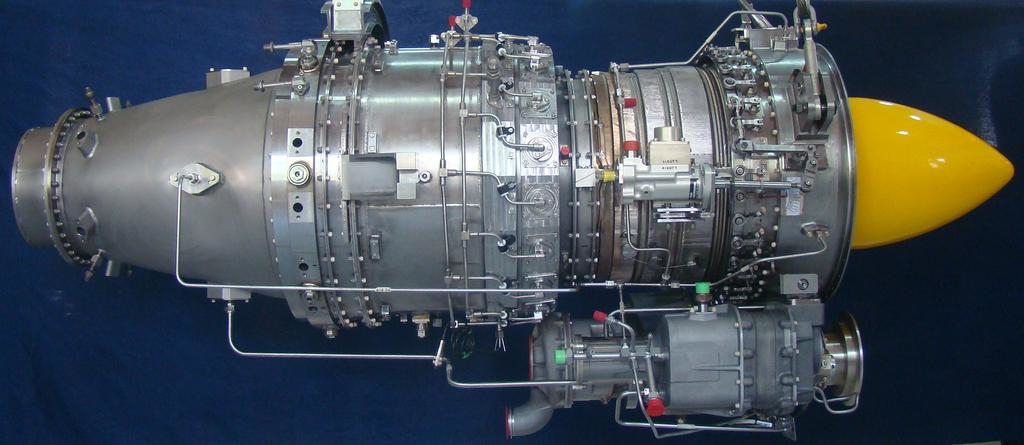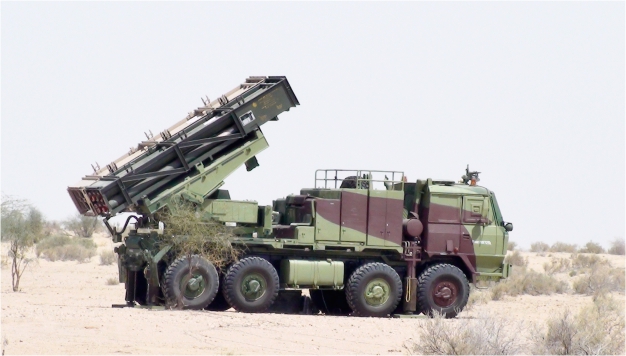SOURCE: RAUNAK KUNDE / NEWS BEAT / IDRW.ORG


At Aero India 2025, held in Bengaluru from February 10-14, a significant development emerged in India’s defense manufacturing landscape. According to a report by idrw.org, Adani Defence and Aerospace has been selected by Russia’s Vympel NPO to locally produce the R-73E Within Visual Range (WVR) air-to-air missile in India, under the designation “Raya.” However, a closer look at Adani Defence’s official website reveals a twist: the missile in question is identified as the R-74E, dubbed “Raya” in India, raising questions about its specifications and role as a successor to the ageing R-73.
The R-73E, known by its NATO designation “AA-11 Archer,” has been a cornerstone of the IAF’s WVR arsenal, equipping Russian-origin platforms like the Su-30 MKI, MiG-29 UPG, and MiG-21 Bison. Renowned for its agility and infrared homing capabilities, the R-73E gained fame during the 2019 India-Pakistan skirmish, when an IAF MiG-21 reportedly downed a Pakistani F-16 with the missile—a claim Pakistan disputes but which cemented its combat pedigree.
Continue readingSOURCE: AFI
)

Hindustan Aeronautics Limited (HAL), India’s premier aerospace and defense manufacturer, has introduced an innovative Virtual Maintenance Trainer (VMT) for the Light Combat Helicopter (LCH) “Prachand.” This cutting-edge training solution harnesses Industry 4.0 technologies, specifically Virtual Reality (VR), to transform how maintenance crews prepare for servicing one of India’s most advanced indigenous combat helicopters. Designed to enhance training efficiency, safety, and cost-effectiveness, the VMT promises to set a new standard in aviation maintenance education.
The LCH “Prachand,” inducted into the Indian Air Force in October 2022, is a multi-role light attack helicopter designed for high-altitude warfare and precision strikes. Maintaining such a sophisticated platform demands equally advanced training tools, and the VMT rises to the challenge. By simulating the helicopter’s intricate systems in a virtual space, it empowers technicians to master maintenance procedures without the logistical constraints of accessing a physical aircraft.
Continue readingSOURCE: AFI


In the realm of defense technology, India has quietly emerged as a formidable player, particularly in the development of long-range radar systems. Once reliant on imports from Europe and other global powers, India has not only achieved self-sufficiency but has arguably surpassed European nations in this critical domain. Today, it stands toe-to-toe with China, competing on Beijing’s own turf in a high-stakes technological race that could reshape regional and global security dynamics.
Europe has long been a hub of advanced radar technology, with countries like France, the United Kingdom, and Sweden producing sophisticated systems such as the Thales Ground Master series, the Saab Giraffe, and the BAE Systems ARTISAN radar. These systems, often built around Active Electronically Scanned Array (AESA) technology, have set benchmarks for performance, reliability, and integration into NATO’s defense architecture. However, Europe’s radar development has largely focused on meeting the needs of a relatively stable continent, prioritizing interoperability and incremental upgrades over groundbreaking innovation tailored to diverse, high-threat environments.
Continue readingSOURCE: AFI


Bangladesh stands at a pivotal juncture in its political and security landscape, warns U.S. security expert Michael Rubin, a senior fellow at the American Enterprise Institute and a seasoned observer of South Asian geopolitics. In a stark assessment, Rubin posits that the country faces two stark paths to avert descending into a “Pakistan- and China-backed Taliban nightmare”: either emulate Egypt’s model of a military coup to restore order or require a Grenada-style Indian military intervention to preempt external manipulation. The stakes, he argues, are nothing less than the nation’s sovereignty and stability in an increasingly volatile region.
Egypt’s modern history offers a blueprint that Rubin suggests Bangladesh could follow. In 2013, Egypt’s military, led by then-General Abdel Fattah el-Sisi, ousted the democratically elected but increasingly authoritarian President Mohamed Morsi amid mass protests and fears of Islamist overreach by the Muslim Brotherhood. The coup, while controversial, was framed as a necessary intervention to prevent chaos and secure the state against radicalization. El-Sisi’s subsequent consolidation of power brought stability, albeit at the cost of democratic freedoms, and positioned the military as the ultimate arbiter of Egypt’s destiny.
Continue readingSOURCE: AFI


On March 24, 2025, Rear Admiral Ajay D Theophilus, Flag Officer Commanding Goa Naval Area (FOGA) HQGNA, unveiled the latest additions to the Naval Aviation Museum in Goa, marking a significant enhancement to one of India’s premier showcases of maritime air power. The star attraction of the event was the Sikorsky UH-3H helicopter, now on permanent display, offering visitors a rare opportunity to step inside and experience the world of Naval Aviators firsthand.
The unveiling ceremony, held with traditional naval pomp, underscored the Indian Navy’s commitment to preserving its rich aviation heritage while inspiring future generations. The Sikorsky UH-3H, a versatile and iconic helicopter, joins an impressive lineup of aircraft at the museum, which is located near Bogmalo Beach in Goa. This addition not only enriches the museum’s collection but also provides an immersive glimpse into the operational life of the Navy’s airborne warriors.
Continue readingSOURCE: IDRW.ORG


The Hindustan Turbo Fan Engine (HTFE-25), a 25 kN thrust turbofan engine under development by Hindustan Aeronautics Limited (HAL), represents a cornerstone of India’s ambition to achieve self-reliance in aerospace propulsion technology. Designed to power a variety of platforms—including trainer jets, unmanned aerial vehicles (UAVs), light combat aircraft, and potentially regional jets—the HTFE-25 is a testament to India’s growing engineering prowess. As of March 26, 2025, the program has made notable strides, though it faces challenges that have tempered its ambitious timeline. Here’s an in-depth look at the HTFE-25, its current status, and the progress of this critical initiative.
Initiated in 2013 by HAL’s Aero Engine Research & Development Centre (AERDC) in Bengaluru, the HTFE-25 is a low-bypass, twin-spool, mixed-flow turbofan engine featuring a three-stage low-pressure (LP) compressor, a five-stage high-pressure (HP) compressor, and air-cooled, high-efficiency turbine blades. With a thrust output of 25 kN (approximately 5,620 pounds), it is versatile enough to power single-engine aircraft weighing up to 5 tonnes or twin-engine configurations up to 9 tonnes. HAL envisions its use in basic, intermediate, and advanced trainer aircraft like the HJT-36 Sitara, as well as emerging platforms such as the Combat Air Teaming System (CATS) Warrior UAV and High-Altitude Long Endurance (HALE) drones.
Continue readingSOURCE: IDRW.ORG


India’s Centre for Airborne Systems (CABS), a key laboratory under the Defence Research and Development Organisation (DRDO), is set to repurpose one of its existing Netra Airborne Early Warning and Control (AEW&C) systems as a technological demonstrator. This strategic move aims to accelerate the development of advanced indigenous radar systems for six additional Netra platforms, including the recently approved Netra Mk1A. The initiative, greenlit by the Defence Acquisition Council (DAC), marks a significant leap in India’s quest for self-reliance in airborne surveillance technology, with cutting-edge Gallium Arsenide (GaS) and Gallium Nitride (GaN)-based Active Electronically Scanned Array (AESA) radars at its core.
The Netra AEW&C, mounted on Embraer EMB-145I aircraft, has been a pioneering achievement for India’s indigenous defense ecosystem. The initial Netra Mk1, with its GaS-based AESA radar, provides 240-degree coverage and a detection range of approximately 250-300 kilometers for fighter-sized targets. Two operational Netra Mk1 systems are currently in service with the Indian Air Force (IAF), complemented by a third used for trials and development. It is this third aircraft that CABS plans to convert into a technological demonstrator, serving as a testbed for next-generation radar systems.
Continue readingSOURCE: AFI


The Indian Air Force (IAF) finds itself at a crossroads, grappling with a rapid decline in squadron strength that has left it dangerously overstretched. With an authorized strength of 42 squadrons, the IAF is currently operating at a mere 31—a number that analysts warn could dip further without swift corrective action.
While external factors like production delays and geopolitical complexities play a role, much of the blame lies squarely with the IAF’s own indecision and procrastination. From stalling critical upgrades to the Su-30MKI fleet to hesitating on orders for the indigenous Tejas Mk1 despite its Initial Operational Clearance (IOC), and taking nearly a decade to define requirements for the Advanced Medium Combat Aircraft (AMCA), the IAF’s leadership has contributed significantly to the mess it now faces.
Continue readingSOURCE: AFI


In a significant boost to India’s indigenous fighter jet program, the 7th Tejas Mk1A, bearing the serial number LA-5039, successfully completed its maiden flight before the end of March 2025. This milestone underscores the accelerated pace of the Tejas Mk1A initiative, with Hindustan Aeronautics Limited (HAL) rolling out seven aircraft within the span of a year. A grainy image of LA-5039 circulating on X has sparked enthusiasm among defence enthusiasts, signaling that the program is fast-tracking to meet the Indian Air Force’s (IAF) modernization needs.
The Tejas Mk1A, an advanced variant of the Light Combat Aircraft (LCA) Mk1, represents a cornerstone of India’s push for self-reliance in defence manufacturing. The first Mk1A, LA-5033, took to the skies in March 2024, and the rollout of LA-5039 just over a year later highlights HAL’s ability to ramp up production despite initial challenges, including delays in engine deliveries from General Electric (GE). The successful flight of LA-5039, completed ahead of the March 31, 2025 deadline, reflects improved coordination between HAL, its supply chain, and international partners.
Continue readingSOURCE: AFI


On the night of March 29, 2025, a heavily secured flatbed truck was observed transporting an armored vehicle under the cover of darkness, sparking intrigue among defence enthusiasts and analysts. The vehicle, shrouded partially with a blue tarp, was captured in a grainy photograph circulating on social media platforms like X, showing it being moved along a well-lit highway.
While the Indian Army frequently conducts such movements to maintain operational readiness, the unidentified nature of this armored vehicle—distinctly not based on the familiar BMP-II platform—has raised questions about a potential new addition to India’s mechanized forces.
Continue readingSOURCE: AFI


In a landmark achievement, the Ministry of Defence (MoD) has, for the first time in recent years, fully utilized its allocated capital budget, leaving no funds unspent. This milestone, announced on April 1, 2025, underscores a significant leap in India’s defence preparedness and financial discipline, with every rupee strategically directed toward bolstering the nation’s military capabilities.
The complete allocation of the capital budget has been channeled into modernizing equipment, enhancing operational readiness, and strengthening the Indian Armed Forces. A key focus of this effort has been the promotion of indigenous defence production, aligning with the government’s #AatmanirbharBharat (Self-Reliant India) initiative. By prioritizing homegrown solutions, the MoD has taken substantial steps to reduce India’s dependence on foreign imports, fostering self-reliance in military technology and hardware.
Continue readingSOURCE: AFI


A U.S. court has dismissed Khalistan separatist Gurpatwant Singh Pannun’s assertion that he successfully served a legal summons to India’s National Security Advisor (NSA), Ajit Doval, during the latter’s visit to the United States on February 12-13, 2025. The ruling came after a judge from the Southern District of New York reviewed a letter from Pannun’s lawyer detailing failed attempts to deliver the notice, reinforcing India’s stance that no such service occurred.
Doval, who accompanied Prime Minister Narendra Modi during the trip, was staying at Blair House, the U.S. president’s official guest residence, under tight security provided by the U.S. Secret Service. Pannun, a dual U.S.-Canadian citizen and leader of the banned Sikhs for Justice group, had hired two process servers and an investigator to deliver the summons, which stemmed from a civil lawsuit he filed in September 2024. The lawsuit accuses Indian officials of orchestrating a failed assassination plot against him, a claim U.S. authorities have linked to an Indian government agent, Vikash Yadav.
Continue readingSOURCE: RAUNAK KUNDE / NEWS BEAT / IDRW.ORG


Satyanarayan Nuwal, Chairman of Solar Defence and Aerospace Limited, a subsidiary of Solar Industries, has revealed that Spain is the latest country engaged in discussions for the potential supply of India’s indigenous Pinaka Multi-Role Rocket Launchers (MRBLs).
This development follows the successful export of Pinaka systems to Armenia and ongoing negotiations with France, signaling a growing international appetite for India’s advanced artillery technology. Nuwal’s announcement, made in early 2025, underscores Solar Defence’s pivotal role in positioning the Pinaka as a competitive alternative in the global defense market, even as Spain advances its own rocket launcher program with the Israeli Elbit Systems’ PULS-based Silam.
Continue readingSOURCE: RAUNAK KUNDE / NEWS BEAT / IDRW.ORG


The Indian Navy, which recently unveiled its ambitious Vision 2047—coinciding with the centenary of India’s independence—has sparked significant discussion about its fighter jet roadmap. Initially hinting at plans to integrate a 5th-generation deck-based fighter into its fleet, the Navy appears to be recalibrating its strategy.
A senior naval official, speaking to idrw.org, revealed that the Navy might bypass the procurement of a full-fledged 5th-generation fighter jet, opting instead to prioritize the Twin Engine Deck-Based Fighter (TEDBF)—a “5th Gen Minus” platform—while setting its sights on a 6th-generation successor by 2047.
Continue readingSOURCE: RAUNAK KUNDE / NEWS BEAT / IDRW.ORG


The Indian Air Force (IAF) is charting a strategic roadmap to retire its aging fleet of fourth-generation fighter jets—procured in the 1970s and 1980s—in a phased manner, replacing them primarily with the indigenous Tejas MkII, according to information shared with idrw.org. The plan prioritizes the withdrawal of the Jaguar DARIN I and II variants, followed by the MiG-29UPG, Jaguar DARIN-III, and finally the Mirage-2000H, aligning with the induction of advanced platforms like the Tejas MkII and the Advanced Medium Combat Aircraft (AMCA) MkI. This transition reflects the IAF’s dual focus on modernizing its squadrons and bolstering India’s self-reliance in defence manufacturing.
The retirement process will commence with the Jaguar DARIN I and II aircraft, older variants of the Anglo-French SEPECAT Jaguar strike fighter that have not been upgraded to the DARIN-III standard. The IAF, the last operator of the Jaguar globally, currently maintains six squadrons of these deep-penetration strike aircraft, totaling around 120 jets, stationed at Ambala, Jamnagar, and Gorakhpur. The DARIN (Display Attack Ranging Inertial Navigation) I and II models, inducted starting in 1979, are approaching the end of their service lives, with airframes dating back to the 1980s and early 1990s.
Continue reading